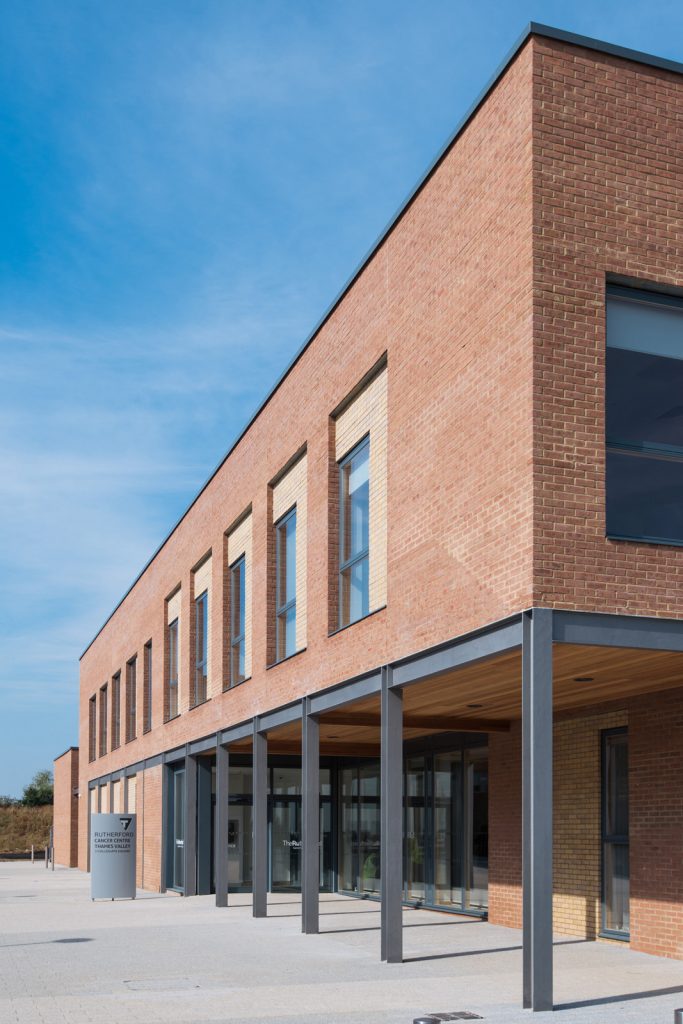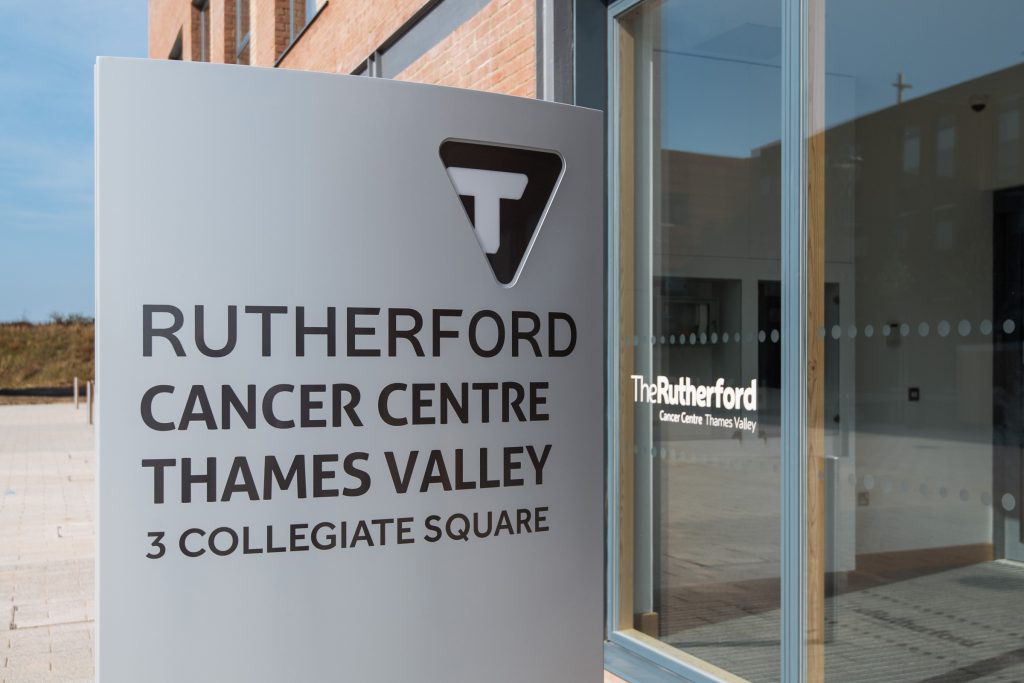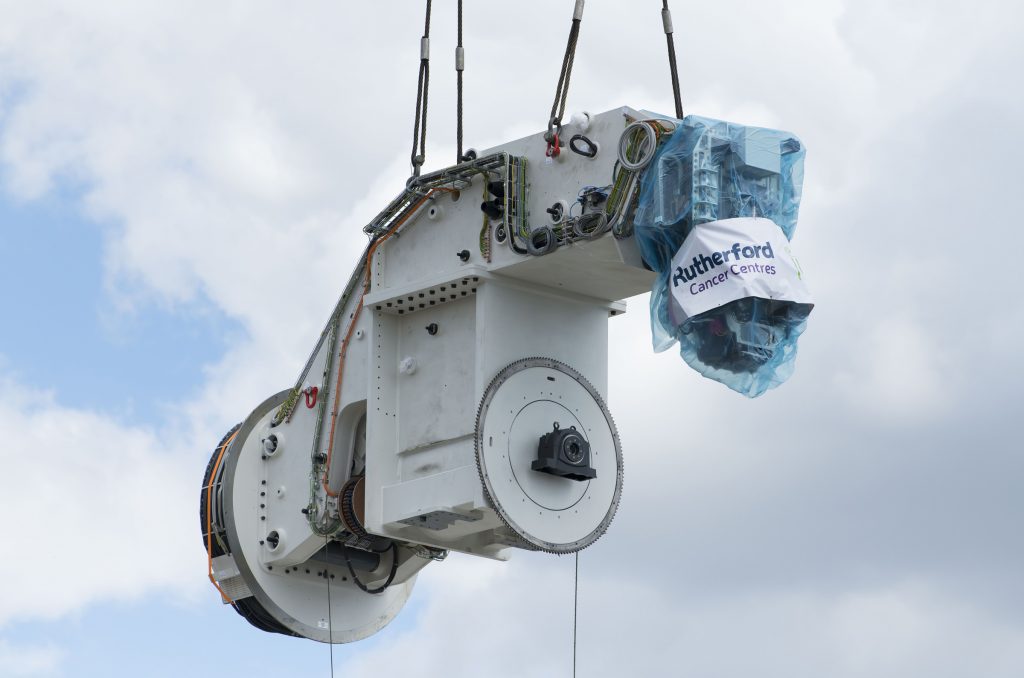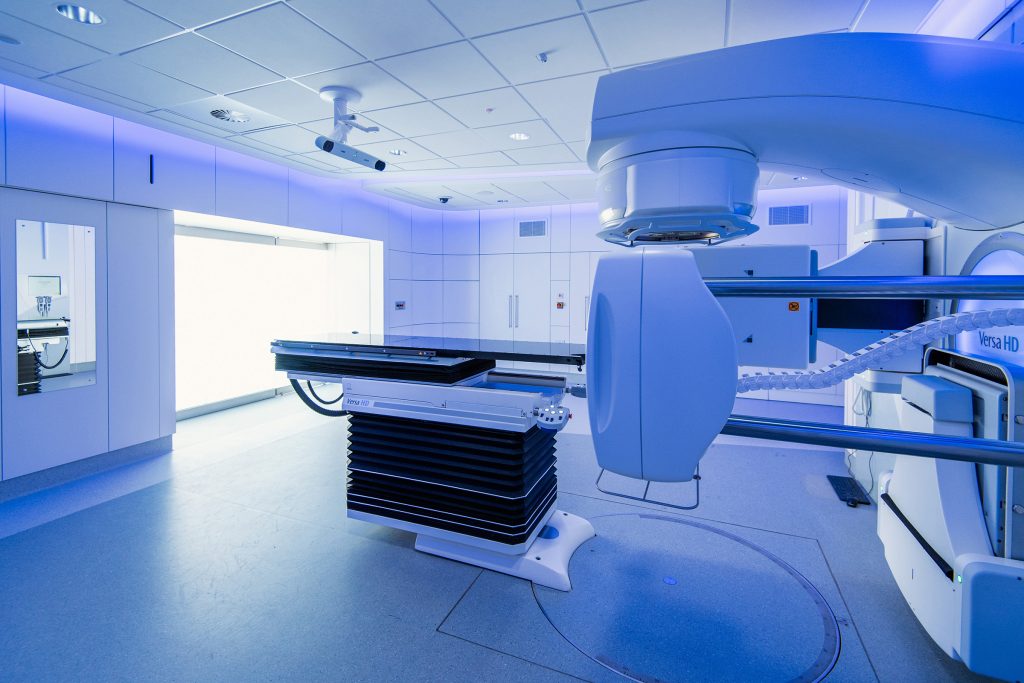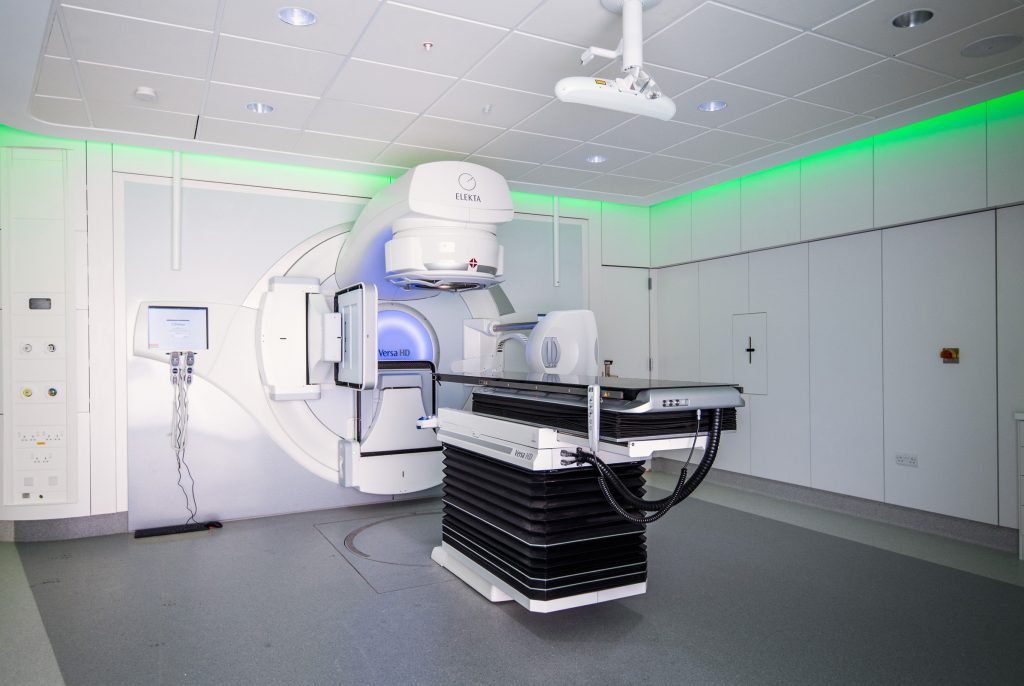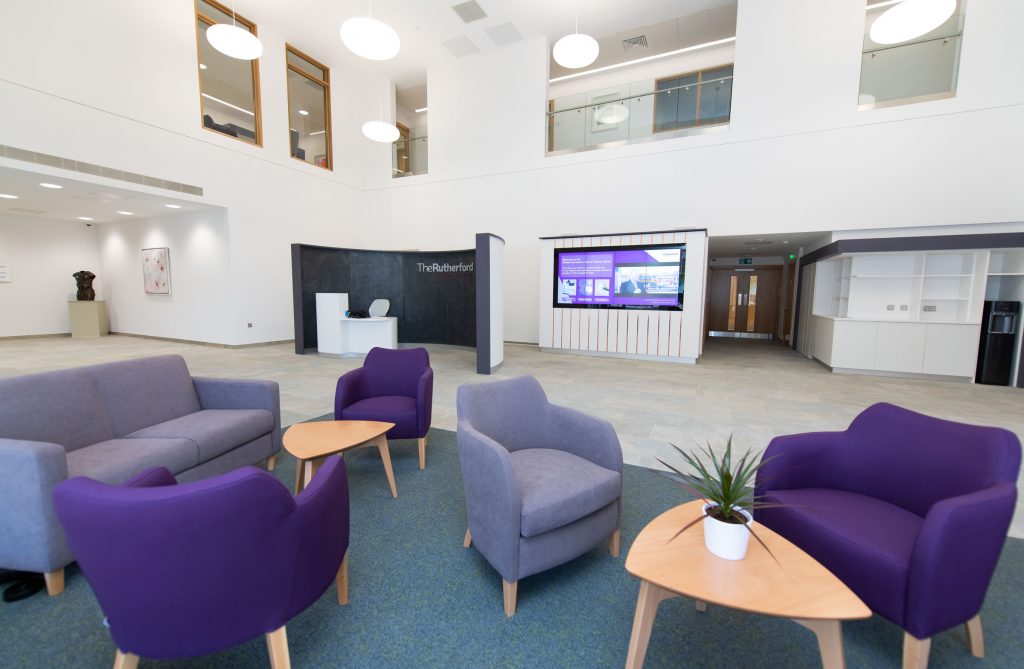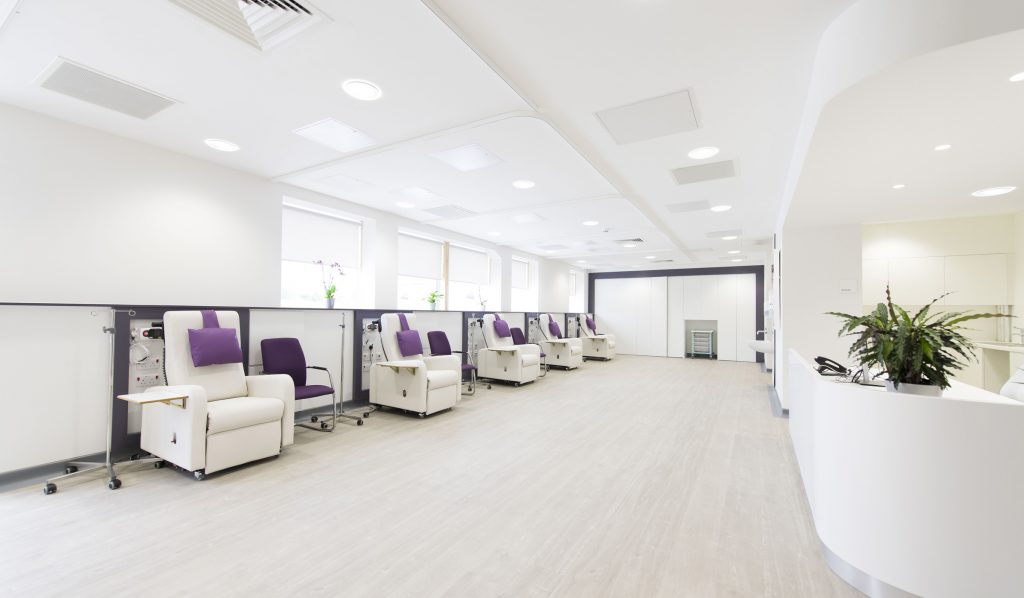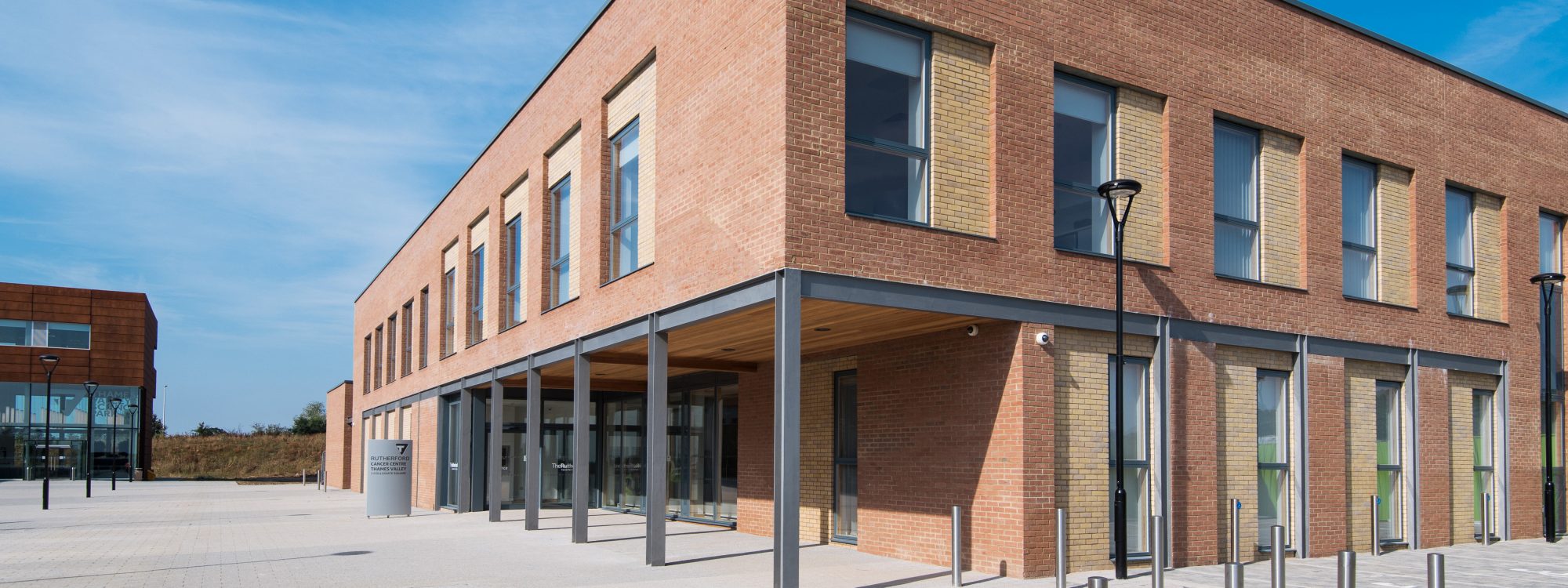
The Rutherford Cancer Centre Thames Valley, Reading
This facility is the first of its kind in the UK and open to both referred NHS and private patients offering the new proton therapy which releases its cancer-destroying energy with sub-millimetre precision thereby minimising damage to adjacent tissue.
The design and construction of such heavily serviced centres at the very cutting edge of medical technology provides certain technical challenges although the design principle of putting the patient at the heart of the process, remains consistent with much of our other health work and particularly our work in the design of palliative care centres.
However, like Bomarsund, the Reading building will also contain a cyclotron, which generates the Proton Beam, and other specialist equipment which generate neutrons and gamma rays in addition to the Proton Beam. The cyclotron requires shielding in an underground bunker to protect staff and patients to at least the same levels as apply to X-ray and radiotherapy suites elsewhere in the UK. Separating the bunkers and plant areas from the patient areas was obviously a critical issue in the design as was the logistics of installing the huge equipment utilised in the revolutionary process. Whilst Bomarsund had presented a green field location, the Reading Centre is located in the Thames Valley Science Park (TVSP) which already had a previous masterplan and design codes by the Scott Brownrigg international design practice and additional design codes incorporated with the initial ‘Gateway’ building which provides a mix of offices, laboratories and amenity spaces, designed by the Newcastle-based Ryder practice.
Taking note of the recommendations of both plans, we produced our own design for the proton beam centre which essentially proposes a two storey building based largely upon room sizes, relationships and configurations that have been thoroughly tested with PPI clinical staff to ensure that the patient flow works throughout the building. The layout, however, also allows access for the heavy craneage required to install the cyclotron’s shielded vaults and other heavy equipment.
The relatively low height of the building humanises the point of entry and puts visitors at ease whilst the double height reception area brings in as much natural light into the are as possible and creates a feeling of space. The reception leads directly onto a spine running the length of the building with the consulting rooms off and glazing at each end. The centre includes facilities for proton beam therapy, a linear accelerator as well as a CT (Computed Tomography) Suite and an MRI with each treatment area separated by the layout, whilst the layout also creates a public piazza to the front of the building, creating a focal point that is enhanced by high quality hard and soft landscaping.
It is expected that both Reading and Bomarsund will be able to treat up to 500 patients every year and in addition to proton beam therapy, will offer imaging, chemotherapy, traditional radiotherapy and well-being.
